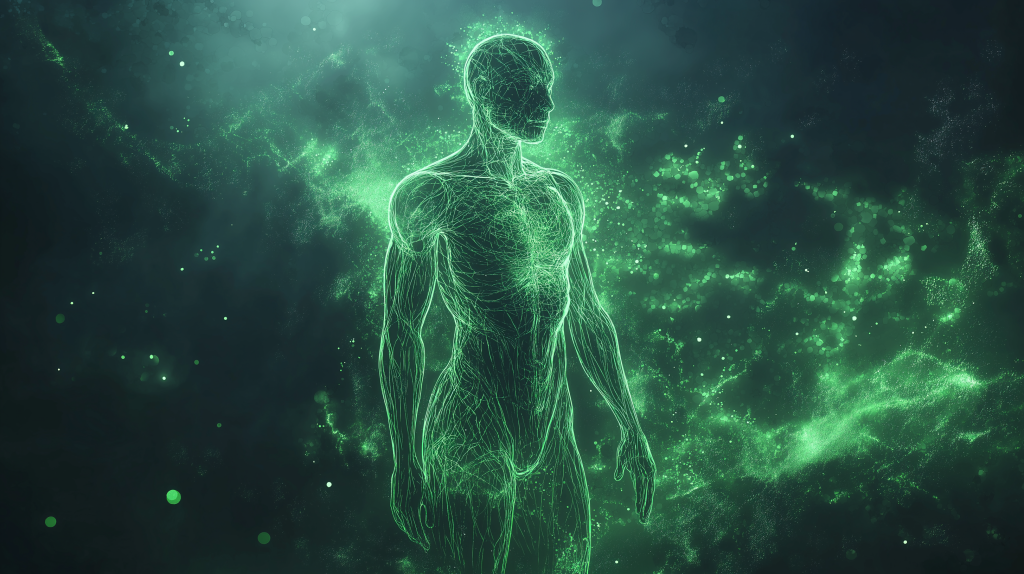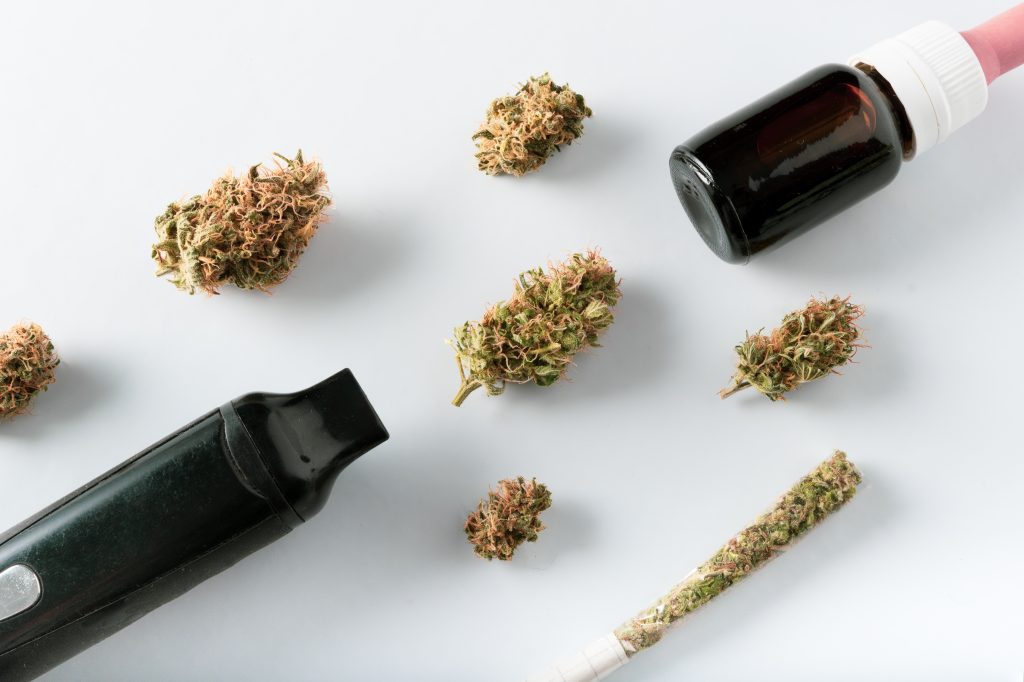Cannabis gegen Schmerzen
Leiden Sie unter chronischen Schmerzen, bei denen herkömmliche Behandlungen keine ausreichende Linderung bringen? Eine Cannabinoid-Therapie und medizinische Cannabisprodukte könnten eine wirksame Alternative darstellen. Stellen Sie sich vor, jeder Schritt, jede Bewegung, selbst das Sitzen oder Liegen ist mit Schmerzen verbunden. Millionen Menschen in Deutschland leben genau so – mit chronischen Schmerzen, die ihren Alltag massiv einschränken.Medizinisches Cannabis als neue Hoffnung bei chronischen Beschwerden
Wenn klassische Schmerzmittel versagen oder unerwünschte Nebenwirkungen verursachen, suchen viele Betroffene nach neuen Wegen. Eine dieser Möglichkeiten ist Cannabis bei Schmerzen: Immer mehr Patientinnen und Patienten finden Linderung durch die Therapie mit medizinischem Cannabis – einer natürlichen, individuell anpassbaren Behandlungsform, die gezielt auf das körpereigene Endocannabinoid-System wirkt.
Natürliche Behandlung chronischer Schmerzen mit Cannabisprodukten
Chronische Schmerzen schränken das Leben von Millionen Menschen erheblich ein – sie erschweren alltägliche Aktivitäten und reduzieren die Lebensqualität. Wenn konventionelle Medikamente versagen oder starke Nebenwirkungen verursachen, kann medizinisches Cannabis eine wertvolle Ergänzung oder Alternative darstellen.

Medizinisches Cannabis zur Linderung chronischer Schmerzen
Chronische Schmerzen bestehen länger als drei Monate, sind häufig diffus und entstehen durch verschiedene Ursachen wie Nervenschädigungen, entzündliche Erkrankungen oder Rückenprobleme.
Cannabinoide wie THC und CBD beeinflussen das körpereigene Endocannabinoid-System, das unter anderem Schmerzempfinden, Stimmung und Entzündungsprozesse reguliert. Viele Patientinnen und Patienten berichten von einer raschen Linderung ihrer Beschwerden nach Beginn einer Cannabis-Therapie.
Wie wirkt Cannabis als Schmerzmittel?
Experten gehen davon aus, dass sich die Wirkung von Cannabisprodukten gegen Schmerzen dadurch erklären lässt, dass Cannabinoide wie THC und CBD mit dem Endocannabinoidsystem des Körpers interagieren3.

Das Endocannabinoidsystem
Das Endocannabinoidsystem (ECS) ist ein Regulationssystem, das aus Rezeptoren für körpereigene Cannabinoide besteht. Diese so genannten Endocannabinoide können die Rezeptoren bei Bedarf aktivieren und bestimmte Prozesse beeinflussen. Zu diesen Prozessen zählen unter anderem das Schmerzempfinden, die Emotionsregulation, der Schlaf sowie die Immunabwehr.
Darüber hinaus können aber auch die Wirkstoffe der Cannabispflanze (Phytocannabinoide) an diese Rezeptoren binden, sie aktivieren und daher ähnliche Wirkungen hervorrufen. Insgesamt enthält die Cannabispflanze mehr als 100 Cannabinoide, wovon bislang nur wenige erforscht wurden. THC und CBD sind die am häufigsten vorkommenden und die am besten untersuchten Phytocannabinoide.
Die wichtigsten Rezeptoren sind die Cannabinoid-Rezeptoren 1 (CB1) und 2 (CB2). Es wird angenommen, dass beide bei ihrer Aktivierung schmerzlindernd wirken. CB1 kommt im zentralen Nervensystem sehr häufig vor, während CB2 in Immunzellen sehr häufig vertreten ist. Beide Rezeptoren sind über den ganzen Körper verteilt.3
Bei welchen Schmerzen kommt medizinisches Cannabis zum Einsatz?
Medizinisches Cannabis ist kein Allheilmittel – und sollte daher auch mit Bedacht eingesetzt werden. Die meisten Verschreibungen von medizinischem Cannabis werden für chronische Schmerzen ausgestellt und insbesondere die Wirkung auf neuropathische Schmerzen wird durch wissenschaftliche Studien belegt. Ob Cannabis bei akuten Schmerzen wirksam ist, ist eher zweifelhaft 4,5,6,7.
Die Wirkung von Cannabinoiden auf chronische Schmerzen
Man geht davon aus, dass THC das wichtigste schmerzstillende Cannabinoid ist, aber auch CBD trägt zur schmerzstillenden Wirkung bei. Außerdem scheint die Kombination dieser beiden Cannabinoide die positiven Wirkungen zu verstärken und gleichzeitig unerwünschte Nebenwirkungen von THC zu verringern. Einer der Mechanismen, die an der schmerzlindernden Wirkung von Cannabinoiden beteiligt sind, ist die Verringerung der Freisetzung von Neurotransmittern durch die Neuronen, wodurch sich das Schmerzempfinden verändert.8
Studien geben Hinweise darauf, dass Cannabis nicht klassisch schmerzlindernd wirkt. Vielmehr trägt es dazu bei, dass Patienten die Schmerzen als weniger störend empfinden9. Der Schmerz verschwindet also nicht, wird aber durch die Cannabinoidtherapie als weniger unangenehm wahrgenommen.
Wie werden Cannabisprodukte gegen Schmerzen angewendet?
Cannabis kann eine wertvolle Unterstützung in der Schmerztherapie sein. Cannabisprodukte gegen Schmerzen können ergänzend zu regulären Medikamenten, z. B. Opioiden, verschrieben werden. Vor allem Patienten, die durch herkömmliche Therapieansätze keine ausreichende Linderung erlangen, können von den Möglichkeiten einer ergänzenden Cannabinoidtherapie profitieren.
Auch für Personen, die unter den teils sehr unangenehmen Nebenwirkungen der Opioide leiden, kann die Schmerztherapie mit Cannabinoiden Vorteile mit sich bringen10. Im Optimalfall kann die Dosierung der Opioide durch die veränderte Schmerzwahrnehmung reduziert werden, wodurch wiederum Nebenwirkungen und die Gefahr einer Opioid-Abhängigkeit verringert werden können.
Weitere Vorteile
Verschiedene Studien weisen zudem darauf hin, dass Phytocannabinoide die Nebenwirkungen der starken Schmerzmittel und Folgesymptome der chronischen Erkrankungen abmildern könnten:
- Übelkeit und Erbrechen sind eine häufige Nebenwirkung der Opioidtherapie. Studien zur Behandlung mit Cannabis während der Chemotherapie haben ergeben, dass Cannabis Übelkeit und Erbrechen lindern konnte6.
- Einige Patienten leiden durch den andauernden starken Schmerz unter Appetitlosigkeit und Gewichtsverlust, zudem zählt ein geminderter Appetit ebenfalls zu den häufigen Nebenwirkungen einer Schmerztherapie mit Opioiden. Cannabis wirkt nachweislich appetitanregend.6
- Viele Schmerzpatienten erkranken als Folge ihrer chronischen Schmerzen an einer Depression. Laut einer deutschen Untersuchung werden 2,8 % der Cannabis-Medikamente wegen Depressionen verschrieben5.
- Schlafstörungen sind keine Seltenheit unter chronisch erkrankten Personen und belasten zusätzlich. Forschungsteams weisen auf die mögliche schlaffördernde Wirkung von medizinischem Cannabis hin11.
Anwendungsformen von Cannabis gegen Schmerzen
Cannabisprodukte gegen Schmerzen und andere Erkrankungen und Symptome sind in verschiedenen Anwendungsformen verfügbar:
- Inhalation: Werden die Cannabispräparate über die Lunge aufgenommen, gelangen sie schnell in den Blutkreislauf und sorgen dafür, dass die Wirkung schnell eintritt. Aufgrund der krebserregenden Verbrennungsprodukte beim Rauchen empfehlen Mediziner die Inhalation mit einem Vaporisator.
- Orale Einnahme: Medizinische Cannabispräparate werden auch als Medikamente zur oralen Einnahme hergestellt. So können Patienten das Medikament in Form von Tabletten, Kapseln, Ölen oder alkoholischen Tinkturen einnehmen. Schmerzpatienten bevorzugen die orale Einnahme häufig aufgrund der genauen Dosierbarkeit und der längeren Wirkdauer.
- Oromukusale Anwendung: Eine weitere Anwendungsform ist die Aufnahme über die Mundschleimhaut. Dabei werden Tropfen unter die Zunge gegeben. So gehen die aktivierten Wirkstoffe direkt in den Blutkreislauf über und bringen eine schnelle Wirksamkeit mit sich, außerdem wird ein Teil des Medikaments geschluckt und über den Verdauungstrakt aufgenommen.

Cannabisprodukte gegen Schmerzen
Cannabis wird seit Jahrtausenden in unterschiedlichen Kulturen als Arzneimittel angewendet und mit den liberaler werdenden Gesetzen in vielen Ländern widmet sich auch die medizinische Forschung wieder vermehrt den gesundheitsfördernden Eigenschaften der Cannabispflanze. Studien beschäftigen sich neben vielen anderen Anwendungsgebieten auch mit der möglichen Wirkung von Cannabisprodukten gegen Schmerzen. In Deutschland darf medizinisches Cannabis seit 2017 unter bestimmten Voraussetzungen an Patienten verschrieben werden.
Telemedizin
Wir nutzen fortschrittliche digitale Gesundheitslösungen, um die Behandlung mit medizinischen Cannabis zugänglicher zu machen. Patienten können ihre Behandlung wahlweise vor Ort in der Praxis oder von zu Hause aus beginnen und fortsetzen, was Zeit spart und gleichzeitig eine kontinuierliche Überwachung ermöglicht.
Bei welchen Schmerzen wird Cannabis eingesetzt?
Cannabisprodukte gegen Schmerzen werden in erster Linie bei chronischen Schmerzen verschrieben. Insbesondere bei neuropathischen Schmerzen gibt es in der Literatur gute Hinweise auf eine Wirkung von Cannabis. Die Wirkung bei akuten Schmerzen ist zweifelhaft.
Eignet sich CBD oder THC gegen Schmerzen?
THC gilt als das wichtigste schmerzlindernde Cannabinoid, aber auch CBD hat eine schmerzlindernde Wirkung. Beide verändern das Schmerzempfinden, sodass es als weniger störend empfunden wird. Beide Cannabinoide wirken synergetisch, d. h. die positiven Wirkungen werden verstärkt und die negativen Nebenwirkungen von THC werden verringert, wenn sie zusammen eingenommen werden.
Häufig gestellte Fragen
Wie wirkt medizinisches Cannabis gegen Schmerzen?
Medizinisches Cannabis entfaltet seine Wirkung, indem die enthaltenen Cannabinoide wie THC und CBD an das körpereigene Endocannabinoid-System binden. Dieses System reguliert unter anderem Schmerzempfinden, Stimmung und Entzündungsprozesse. Dadurch kann Cannabis Schmerzen lindern oder deren Wahrnehmung als weniger belastend erscheinen lassen3.
Bei welchen Arten von Schmerzen kann Cannabis helfen?
Die besten wissenschaftlichen Belege gibt es für die Behandlung von chronischen Schmerzen, insbesondere bei neuropathischen Schmerzen (z. B. Nervenverletzungen, Polyneuropathie). Auch bei chronischen Rücken-, Tumor- und rheumatischen Schmerzen kann Cannabis eingesetzt werden5,7.
Ist Cannabis bei akuten Schmerzen sinnvoll?
Für akute Schmerzen ist Cannabis in der Regel nicht geeignet. Die meisten Studien und klinischen Erfahrungen beziehen sich auf den Einsatz bei chronischen, länger andauernden Schmerzen. Die Wirksamkeit bei akuten Schmerzepisoden ist bisher kaum belegt4,7.
Für welche Schmerzarten ist die Wirksamkeit von Cannabis am besten belegt?
Die Wirksamkeit von medizinischem Cannabis ist besonders gut bei neuropathischen Schmerzen und bei Schmerzen, die nicht ausreichend auf klassische Schmerzmittel ansprechen, belegt. Auch bei einigen rheumatischen Erkrankungen oder chronischen Schmerzen kann Cannabis hilfreich sein5,7.
Wie unterscheiden sich THC und CBD in ihrer schmerzlindernden Wirkung?
THC gilt als das wichtigste schmerzlindernde Cannabinoid, da es direkt schmerzstillend und entspannend wirkt. CBD trägt zur Schmerzlinderung bei, wirkt aber vor allem entzündungshemmend und kann Nebenwirkungen von THC abschwächen. In Kombination profitieren Patienten meist von einer besseren Wirkung und weniger Nebenwirkungen3,8.
Können Nebenwirkungen von Opioiden durch Cannabis reduziert werden?
Ja, einige Studien deuten darauf hin, dass medizinisches Cannabis Nebenwirkungen wie Übelkeit, Appetitlosigkeit oder Schlafstörungen, die bei Opioid-Therapien auftreten können, lindern und dazu beitragen kann, die Opioid-Dosierung zu reduzieren9,10.
Wie schnell wirkt medizinisches Cannabis gegen Schmerzen?
Bei Inhalation (z. B. Vaporisator) tritt die Wirkung bereits nach wenigen Minuten ein. Bei oraler Einnahme (Öl, Kapseln) setzt die Wirkung nach 30–90 Minuten ein, hält dafür meist länger an. Die individuell optimale Form wählen Sie mit Ihrem behandelnden Arzt.
Welche Formen der Anwendung gibt es für Cannabis bei Schmerzen?
Medizinisches Cannabis kann als Blüte (zur Inhalation), Öl, Tropfen, Kapseln oder Tinktur eingenommen werden. Die Entscheidung für die passende Darreichungsform erfolgt gemeinsam mit dem Arzt und richtet sich nach Wirkungseintritt, Wirkdauer und individuellen Bedürfnissen.
Kann ich durch Cannabis die Dosierung anderer Schmerzmittel reduzieren?
Viele Patienten berichten, dass sie unter ärztlicher Aufsicht durch die Cannabis-Therapie die Dosierung anderer Schmerzmittel, insbesondere Opioide, reduzieren konnten. Dies sollte immer in enger Abstimmung mit Ihrem behandelnden Arzt erfolgen10.
Was sagt die Studienlage zu Cannabis bei chronischen Schmerzen?
Die Studienlage ist für einige Schmerzarten wie neuropathische Schmerzen gut, für andere, z. B. akute Schmerzen, weniger eindeutig. Viele Patienten profitieren von einer verbesserten Lebensqualität und verringerten Schmerzbelastung. Die BfArM-Begleiterhebung liefert dazu wichtige Real-World-Daten5. Mehr dazu im Abschnitt Cannabis Studien.
Ist Cannabis bei neuropathischen Schmerzen wirksam?
Ja, insbesondere bei neuropathischen Schmerzen (z. B. nach Verletzungen oder bei Polyneuropathie) gilt medizinisches Cannabis als wirksame und oft gut verträgliche Alternative, wenn klassische Schmerzmittel nicht ausreichen7,8.
Wie kann ich als Patient von medizinischem Cannabis profitieren?
Wenn herkömmliche Schmerztherapien nicht ausreichend wirken oder zu viele Nebenwirkungen verursachen, kann medizinisches Cannabis helfen, Schmerzen zu lindern, das Wohlbefinden zu steigern und die Lebensqualität zu verbessern. Ein erfahrener Arzt begleitet Sie durch die Therapie.
Ist eine Therapie mit medizinischem Cannabis sicher?
Unter ärztlicher Aufsicht ist die Therapie mit medizinischem Cannabis in der Regel gut verträglich. Unerwünschte Nebenwirkungen wie Müdigkeit, Schwindel oder Mundtrockenheit können auftreten, sind aber meist milde und reversibel. Ein individuelles Risikoprofil wird im Arztgespräch geklärt.
Gibt es Wechselwirkungen mit anderen Medikamenten?
Ja, wie bei jedem Arzneimittel sind auch bei Cannabis Wechselwirkungen mit anderen Medikamenten möglich. Vor allem bei gleichzeitigem Einsatz von Beruhigungsmitteln oder Opioiden ist Vorsicht geboten. Bitte informieren Sie Ihren Arzt über alle eingenommenen Medikamente.
Welche Vorteile bietet die Telemedizin bei Cannabis-Therapie?
Telemedizin ermöglicht es, die Cannabis-Therapie bequem von zu Hause aus zu beginnen und regelmäßig mit spezialisierten Ärzten in Kontakt zu bleiben. Sie sparen Zeit, vermeiden lange Anfahrten und profitieren von einer kontinuierlichen Betreuung.
Kann ich als Schmerzpatient bei Canify Clinics behandelt werden?
Ja, Canify Clinics bietet eine spezialisierte Cannabis-Therapie für Schmerzpatienten an. Nach einer individuellen Prüfung Ihrer Unterlagen beraten Sie unsere erfahrenen Ärzte persönlich – auch per Videosprechstunde. Jetzt registrieren
Ist CBD-Öl allein bei Schmerzen sinnvoll?
CBD-Öl kann bei einigen Patienten schmerzlindernd wirken, besonders bei leichteren Beschwerden oder als Ergänzung zur klassischen Schmerztherapie. Die stärkste schmerzlindernde Wirkung erzielt jedoch meist die Kombination von CBD mit THC.
Welche Nebenwirkungen können bei Cannabis-Therapie auftreten?
Mögliche Nebenwirkungen sind unter anderem Müdigkeit, Schwindel, Mundtrockenheit, gesteigerter Appetit oder kurzfristige Konzentrationsstörungen. Schwere Nebenwirkungen sind selten und meist reversibel. Ihr Arzt klärt Sie vor der Therapie umfassend auf.
Wie läuft die Verschreibung von medizinischem Cannabis ab?
Ihr Arzt prüft, ob eine Cannabis-Therapie bei Ihren Schmerzen medizinisch sinnvoll ist. Nach entsprechender Aufklärung und Beratung wird Ihnen bei Eignung ein Rezept ausgestellt, das Sie in einer Apotheke einlösen können. Die Kostenübernahme durch die Krankenkasse ist bei schwerwiegenden Erkrankungen möglich.
Was sollte ich vor einer Cannabis-Therapie beachten?
Vor Beginn der Therapie sollten Sie eine umfassende ärztliche Beratung in Anspruch nehmen, mögliche Wechselwirkungen und Kontraindikationen abklären und Ihre individuelle Situation mit einem erfahrenen Arzt besprechen. Die Therapie sollte immer begleitet und regelmäßig kontrolliert werden.
Quellenangaben
- Zuardi, A. W. History of cannabis as a medicine: A review. Revista Brasileira de Psiquiatria vol. 28 153–157 (2006).
- Kirsten R. Müller-Vahl, Franjo Grotenhermen. Cannabis und Cannabinoide in der Medizin. Medizinisch Wissenschaftliche Verlagsgesellschaft, Berlin 2020, S. 218
- Anthony, A. T., Rahmat, S., Sangle, P., Sandhu, O. & Khan, S. Cannabinoid Receptors and Their Relationship With Chronic Pain: A Narrative Review. (2020).
- Kirsten R. Müller-Vahl, Franjo Grotenhermen; “Cannabis und Cannabinoide in der Medizin” Medizinisch Wissenschaftliche Verlagsgesellschaft, Berlin 2020, S. 138
- Abschlussbericht der Begleiterhebung nach § 31 Absatz 6 des Fünften Buches Sozialgesetzbuch zur Verschreibung und Anwendung von Cannabisarzneimitteln
- Bilbao, A. & Spanagel, R. Medical cannabinoids: a pharmacology-based systematic review and meta-analysis for all relevant medical indications. BMC Med 20, (2022).
- The National Academies of Sciences Engineering and Medicine (U.S.) Comittee on the health effects of marijuana: an evidence review and research agenda. The health effects of cannabis and cannabinoids: the current state of evidence and recommendations for research. Washington, DC: the National Academies Press (2017).
- Ferro, E. S. et al. Cannabinoid Therapeutics in Chronic Neuropathic Pain: From Animal Research to Human Treatment. (2021).
- de Vita, M. J., Moskal, D., Maisto, S. A. & Ansell, E. B. Association of Cannabinoid Administration With Experimental Pain in Healthy Adults: A Systematic Review and Meta-analysis. JAMA Psychiatry 75, 1118–1127 (2018).
- Boehnke, K. F., Litinas, E. & Clauw, D. J. Medical Cannabis Use Is Associated With Decreased Opiate Medication Use in a Retrospective Cross-Sectional Survey of Patients With Chronic Pain. J Pain 17, 739–744 (2016).
- Walsh, J. H. et al. Treating insomnia symptoms with medicinal cannabis: a randomized, crossover trial of the efficacy of a cannabinoid medicine compared with placebo. Sleep 44, (2021).

